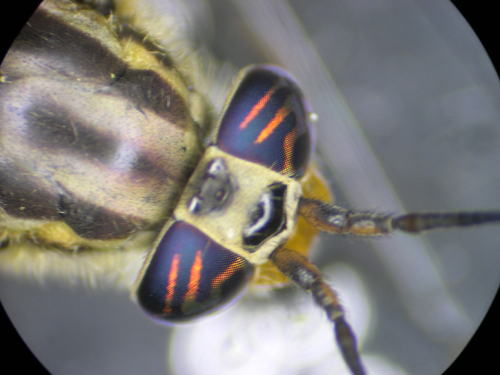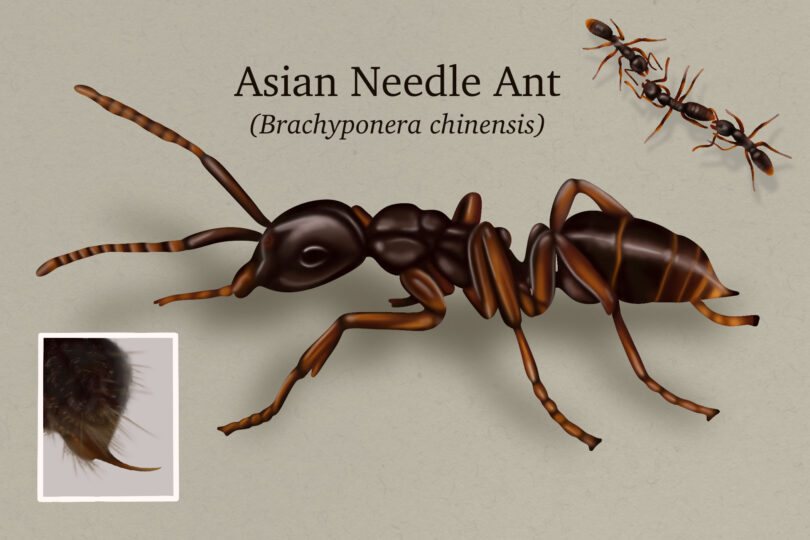People flock outdoors in the spring to plant gardens, clean up, grill out or just spend time with friends. All are prime times and places for insect attacks, says a University of Georgia bug expert.
“Insect encounters don’t usually result in human injury, and most insects should be left alone,” said Elmer Gray, a UGA Cooperative Extension entomologist. “Eliminating areas where insects develop and hide near your home and properly applying pesticides if necessary will keep most stinging and biting pests away.”
That stings!
Social insects, such as bees, wasps, hornets and ants, develop colonies, which could house as few as a dozen to thousands of individuals.
“The social bees, wasps and hornets are a greater stinging threat than the solitary pests because they will attack in large numbers if they perceive the nest is in danger,” he said.
Gray said while most individuals are non-aggressive, all can sting if disturbed or handled.Bees, wasps, hornets, fire ants and scorpions inject venom from the tip of their abdomen.
For most people, a single sting will cause pain, swelling and stiffness of the joint, which can last a few minutes or for one or more days. However, some people can develop more dramatic reactions where swelling may involve an entire arm or leg, last several days or require hospital treatment.
Because of the benefits social insects have on the environment, such as pollination and preying on pest insects, most should not be controlled unless they create a hazard to humans. If you find a nest around your home, Gray said to apply an insecticide in the evening when the insects are at rest.
“With the wind at your back and an escape route selected, aim the insecticide at nest openings in trees, bushes, under eaves, ground cracks and crevices in and around nest openings,” he said. “If possible, destroy the nest or seal the nest opening. Honey bees nesting in buildings will require professional hive removal.”
Treat fire ant mounds right after rain.
“Gently pour an insecticidal drench over a mound so that the mixture will break the surface. Do not stir the mound,” he said. “Use 1 to 2 gallons for an average (12- to 14-inch diameter) mound. Granular and bait formulations are also available.”
Shoo Fly!
Some think house flies are gross. But, their winged cousins like deer flies, horse flies, black flies and biting midges are more than annoying. They bite.
“Deer and horse flies are strong fliers and a serious nuisance of warm-blooded animals and people,” Gray said. “The puncture from the large bladelike mouth parts and the saliva used in feeding can cause pain, swelling and itching.”
Biting midges, also called no-se-ums, punkies or sand flies, are very small. Some are small enough to fit through screens. Often their bite is felt, and they are not even seen. Welts and lesions from the bite may last for days.
Biting midges are more of a problem around creek beds and swamps, Gray said. The larvae breed in damp or wet soils. Homeowners in residential areas without water present are less likely to be bitten.
Black flies, or buffalo gnats, develop in fast-flowing sections of rivers and streams. They are most prevalent in the piedmont and mountainous areas. The saliva they inject while feeding causes swelling and soreness.
Female flies use mouthparts to painfully puncture the skin and dine on a blood meal. Because of the widespread breeding sites and long flight range of biting midges and black flies, homeowner control is not always practical, he said.
“The most effective way to control exposure to flies is to treat skin with repellent,” Gray said.
He said to look for a repellent containing DEET.
“Concentrations of DEET up to 30 percent are approved for use on children and infants older than two months of age,” Gray said. “Concentrations of 10 percent will typically be sufficient to protect children under most circumstances unless extreme pest populations are encountered.”
The Centers for Disease Control and Prevention has approved picaridin, oil of lemon, eucalyptus and IR3535 as alternatives to DEET, but they are not approved for children under three.
Clothing can be treated with permethrin, found in Permanone, to deter fly bites. Remember, too, that light-colored clothing may be less attractive than dark clothing to most biting insects.










